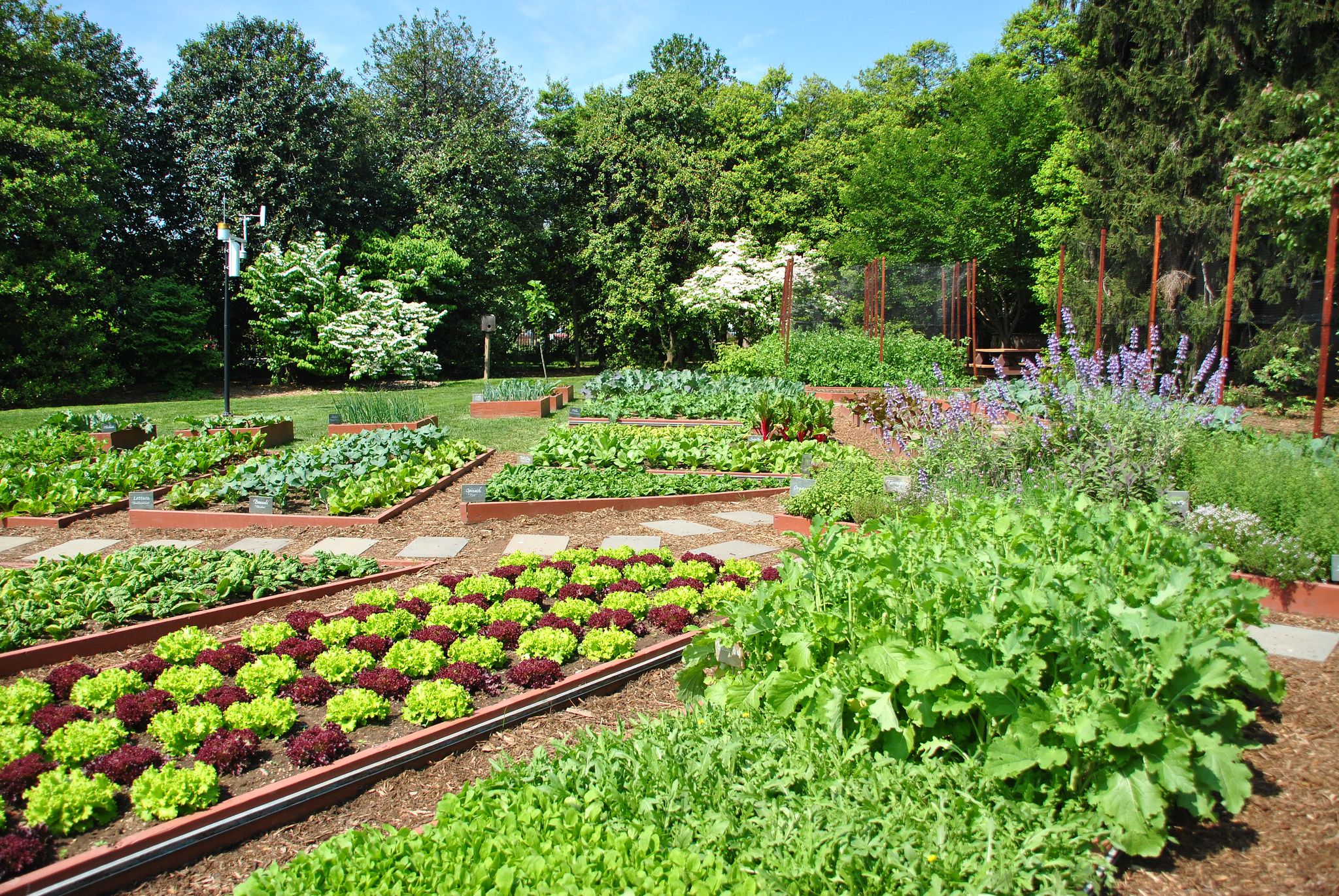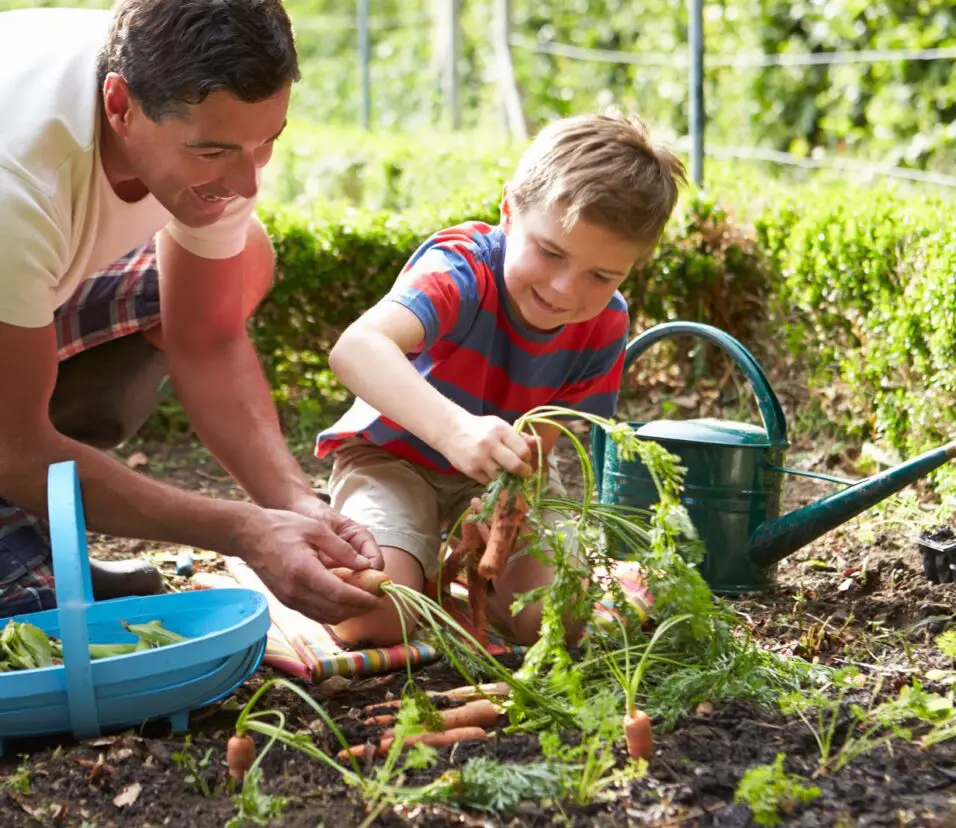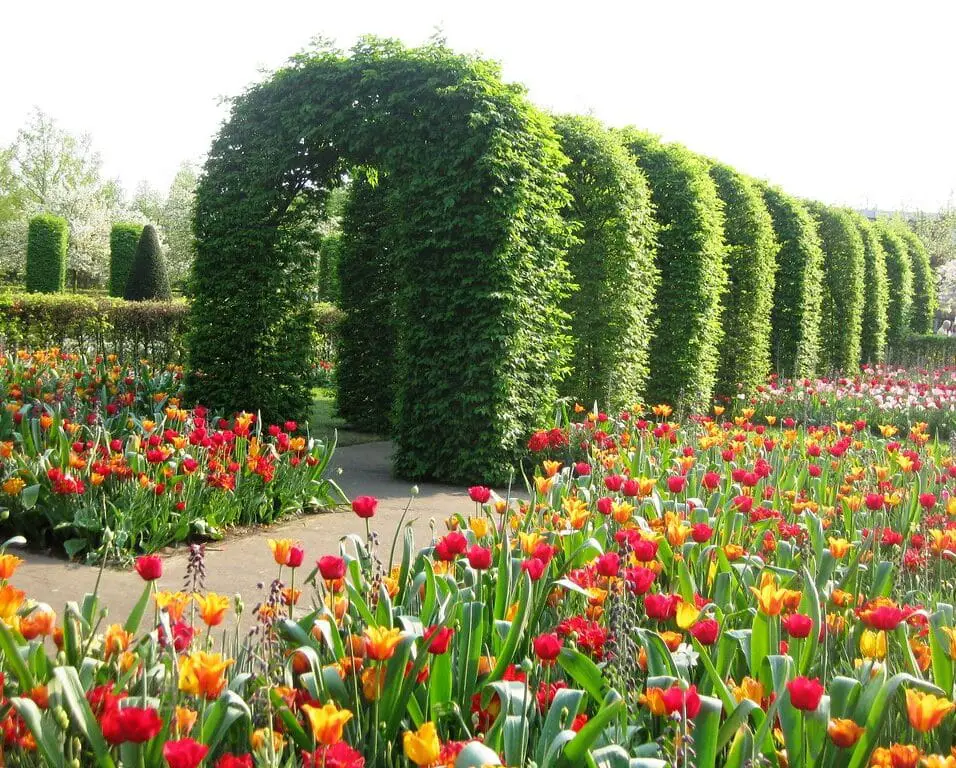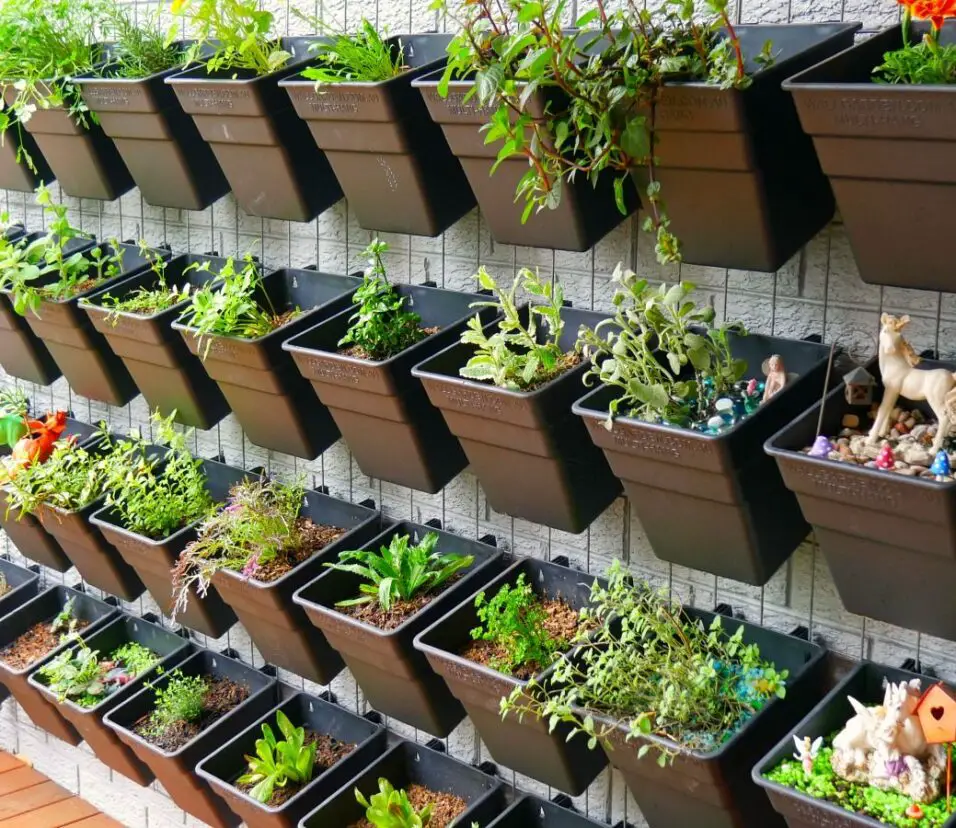What Are Some Benefits Related To Urban Gardening
Introduction
What Are Some Benefits Related To Urban Gardening: In an era marked by rapid urbanization and environmental concerns, the practice of urban gardening has emerged as a beacon of sustainable living with a multitude of benefits. As cities expand and green spaces diminish, urban gardening offers a refreshing solution by transforming limited urban areas into vibrant pockets of nature. This modern approach to cultivation not only brings about a harmonious coexistence between concrete jungles and natural ecosystems but also delivers an array of advantages that resonate on both personal and communal levels.
Urban gardening addresses food security and self-sufficiency, enabling individuals and communities to produce their own fresh, organic produce regardless of limited space. This not only reduces the carbon footprint associated with transporting food over long distances but also encourages healthier dietary choices. Beyond sustenance, urban beach gardens provide havens of tranquility amidst the hustle and bustle of city life, contributing to improved mental well-being and stress reduction.
Furthermore, these green oases act as air purifiers, mitigating the detrimental effects of air pollution and enhancing local air quality. They also foster biodiversity by providing habitats for various plant species and insects, contributing to urban ecosystem balance. Community gardens foster a sense of belonging, encouraging social interaction, knowledge sharing, and skill development among residents.
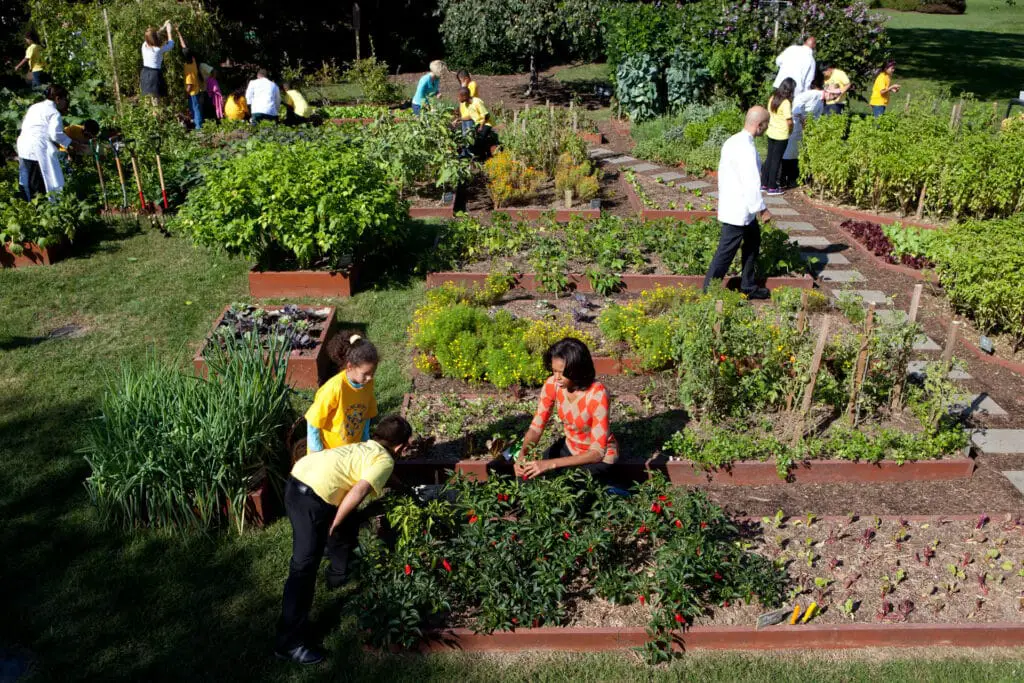
Why do people do urban gardening?
Urban gardening helps to reduce food insecurity in urban areas, especially in low-income neighbourhoods where fresh produce is often unavailable. Gardening allows people to grow their food, reducing their reliance on expensive store-bought produce.
Urban gardening has become a popular and purposeful endeavor for a multitude of reasons. Amidst the concrete expanses of urban environments, people are drawn to urban gardening as a means of reconnecting with nature. The act of nurturing plants and creating green spaces offers a tangible escape from the fast-paced, often stressful urban life.
Food security and sustainability are also addressed by urban gardening. Growing fresh produce in small places empowers individuals and communities to control their food supply, decreasing dependency on distant agricultural regions and the carbon footprint of long transit routes.
Urban gardening allows many to express themselves and create live artworks. Plant selection, arrangement, and growth give a sense of success and a visual feast that brightens the urban environment.
Community participation drives urban gardening. The neighbors who share green areas feel a sense of connection and camaraderie, boosting social engagement, cultural exchange, and knowledge transfer. People like urban gardening because it promotes sustainability, well-being, harmony with nature, and tight-knit urban communities.
How does urban gardening affect the economy?
The economic benefits: Urban agriculture has several economic benefits to society. Urban gardens can promote economic development and tourism. The gardens will attract businesses and residents and are catalysts for business development and promotion of city life.
Urban gardening has a multi-faceted impact on the economy, contributing to various sectors and influencing local economies in distinct ways. Firstly, urban gardening can reduce the strain on traditional food supply chains by producing fresh produce locally, potentially leading to decreased prices for consumers and enhancing food security. This localized food production also lowers transportation costs, indirectly benefiting consumers’ wallets.
Moreover, urban gardening can stimulate economic activity through the sale of gardening supplies, tools, and seeds, bolstering the retail sector. Community gardens and farmers’ markets create opportunities for small-scale entrepreneurs to sell their produce, fostering microeconomic growth. As urban gardens often operate in vacant lots or underutilized spaces, they can contribute to property value appreciation and neighborhood revitalization, indirectly enhancing real estate markets.
Why market gardening is Practised in urban areas?
They’re near metropolitan marketplaces because of high-value crops. The crops are expensive, thus they need to be in a market with strong purchasing power and demand for high-value crops. Urban markets are ideal in such cases.
Market gardening is popular in cities for many reasons that match their needs. First, market gardeners can reduce transportation costs and supply high-quality, locally grown commodities directly to urban customers because urban markets are close by. This efficient supply chain keeps produce fresh and nutritious by reducing harvesting time till consumption.
Urban consumers are diverse and frequently affluent, with a health and sustainability focus. Market gardening offers a variety of fresh, organic products to health-conscious urbanites looking for healthy alternatives to mass-produced meals.
Urban sites like rooftops, communal gardens, and vacant lots offer imaginative land use and high-density cultivation. Market gardeners can increase harvests and earnings from limited space by cultivating intensely. Local food security and urban beauty are improved by this technique.
How big is the urban gardening market?
21, 2023 BREAKING NEWS 2021 global urban farming market size was US$ 137.5 billion. Is Forecast To Grow To US$ 281.9 Billion By 2030 At A CAGR Of 3.1% From 2022 To 2030.
The urban gardening market was growing worldwide in September 2021 due to urbanization, environmental consciousness, and the desire for sustainable living. The market size depends on geography, economics, and trends.
Urban gardening has grown in industrialized countries, attracting a wide range of products and services. Seeds, soil, tools, vertical gardening systems, hydroponic and aquaponic setups, urban farming technology, and consultant services are sold. Fresh produce from urban farms is sold via farmers’ markets, CSA programs, and direct-to-consumer. For the latest and most accurate urban gardening market size and growth information, I recommend consulting recent sources or market research publications.
How does urban gardening contribute to addressing food security challenges in densely populated cities?
In densely populated cities, urban gardening emerges as a vital strategy to address the pressing issue of food security. As urbanization continues to expand, the demand for food rises alongside, often straining traditional food distribution systems. Urban gardening, with its adaptable and space-efficient nature, presents a sustainable solution by bringing food production closer to consumers.
One of the key ways urban gardening tackles food security challenges is by reducing reliance on distant agricultural sources. As fresh produce can be cultivated locally, the need for extensive transportation diminishes, thereby lowering the carbon footprint associated with long-haul food delivery. This not only contributes to environmental preservation but also bolsters the resilience of food supply chains against disruptions caused by external factors.
Moreover, urban gardening empowers individuals and communities to take control of their own food production. Even in limited spaces, such as balconies, rooftops, and community gardens, a diverse range of crops can be grown, providing a diverse and nutritious food source. This self-sufficiency lessens the vulnerability of urban populations to fluctuations in food prices and availability.
By engaging in urban gardening, cities can foster a culture of sustainability and resilience, mitigating the challenges of food security in a world increasingly shaped by urban living.
What environmental advantages are associated with urban gardening in terms of local air quality and reduced carbon footprint?
Urban gardening offers significant environmental advantages, particularly concerning local air quality improvement and the reduction of carbon footprints. In densely populated cities, air pollution poses a major health concern. However, urban gardens act as natural air purifiers by absorbing carbon dioxide and releasing oxygen through photosynthesis. This process not only enhances oxygen levels but also reduces the concentration of harmful pollutants, contributing to cleaner and healthier urban atmospheres.
Urban gardening’s impact on carbon footprint reduction is noteworthy. Conventional agriculture often involves long transportation routes for food distribution, resulting in substantial greenhouse gas emissions. Urban gardens, located within or near cities, drastically shorten these distances. By eliminating or minimizing the need for transportation, they significantly lower carbon emissions linked to the food supply chain.
Incorporating green spaces through urban gardening also helps mitigate the urban heat island effect, wherein cities experience higher temperatures due to heat-absorbing materials. Plants in gardens provide shade and evaporative cooling, mitigating temperature rise and reducing the energy demand for air conditioning. These combined benefits of local air quality enhancement, carbon footprint reduction, and temperature moderation underscore urban gardening’s pivotal role in creating environmentally sustainable urban environments.
How does engaging in urban gardening positively impact individuals’ mental well-being and stress reduction?
Urban gardening greatly improves mental health and stress reduction. Growing plants and establishing green areas in busy cities is a therapeutic escape from daily life. Planting, growing, and seeing plants grow gives a sense of accomplishment and connection to nature, bringing purpose and satisfaction.
Urban gardening gives city residents the healing benefits of nature, as shown by several studies. Plant care releases endorphins and dopamine, which reduce stress and pleasure. The sight of lush vegetation and colorful blossoms also calms the mind and boosts mood.
Urban gardening promotes awareness by encouraging plant care in the moment. This meditative aspect of gardening reduces anxiety and promotes calm. Community gardens can foster a sense of belonging and shared purpose, reducing isolation and fostering beneficial relationships.
Urban gardening reconnects urbanites with nature, provides comfort amidst the urban bustle, and boosts mental resilience through hands-on participation, visual delight, and community contact.
Can you elaborate on the role of urban gardening in promoting biodiversity within urban ecosystems?
Urban gardening plays a crucial role in fostering biodiversity within the often limited and fragmented ecosystems of urban areas. As urbanization expands, natural habitats dwindle, making it increasingly important to create spaces that support diverse plant and animal life. Urban gardens, whether small-scale rooftop gardens, community plots, or green corridors, provide refuges for a wide array of species.
By cultivating various plant species, urban gardens create microhabitats that attract different insects, birds, and other wildlife. This biodiversity not only enhances the beauty of the urban landscape but also contributes to ecosystem resilience. Pollinator-friendly plants, for instance, encourage bees, butterflies, and other beneficial insects to thrive, promoting pollination for nearby plants and supporting local food production.
Urban gardens can serve as stepping stones for wildlife movement in cities, aiding species migration and dispersal. Birds and insects can use these green oases as safe havens and pit stops during their journeys across urban spaces. This connectivity between gardens fosters genetic diversity and the survival of various species.
In essence, urban gardening acts as a vital thread in the urban ecological tapestry. By welcoming a myriad of plant species and their associated wildlife, these gardens contribute to the revitalization of urban biodiversity, ensuring that the city remains a harmonious home for both human inhabitants and the diverse creatures that share the urban environment.

Conclusion
Urban gardening serves as a beacon of sustainability, offering a localized solution to the global challenge of food security. By reducing the reliance on distant food sources and lowering the carbon footprint associated with transportation, these gardens redefine urban spaces as centers of self-sufficiency and environmental responsibility.
Moreover, the mental and emotional advantages of urban gardening are undeniable. Amidst the concrete jungles, these green sanctuaries provide respite, offering spaces for solace, stress relief, and connection to the natural world. Engaging in gardening fosters mindfulness and a sense of achievement, promoting mental well-being amidst the urban hustle.
Yet, perhaps one of the most profound contributions of urban gardening lies in its role as a catalyst for community bonding. These shared spaces nurture social interaction, cultural exchange, and knowledge sharing, fostering a sense of belonging among neighbors who cultivate and grow together.
As our world continues to urbanize and environmental concerns grow, embracing the multifaceted benefits of urban gardening becomes an imperative. These verdant havens embody the potential for sustainable living, ecological stewardship, improved mental health, and communal unity.



